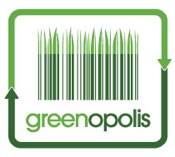Gilligan’s Island – an Exercise in Green Living?
What if You Lived on a 1000 Acre Island?
Jan 4, 2010 9:45 AM ET
Gilligan’s Island – an Exercise in Green Living?
Gilligan’s Island was a hit TV series about a group of tourists surviving on an island they couldn’t leave. What if you lived on an island that you couldn’t leave? With restricted amounts of safe water, fertile land, materials and energy, and limited space to throw things “away”?
In the book, Collapse, Jared Diamond describes two remote tiny islands in the South Pacific that have been continuously and sustainably inhabited for over 3000 years. Tikopia is only 1200 acres but supports 1200 inhabitants. It has 800 people per square mile of farmland. Despite that density, Tikopia has sustained its population for almost 3000 years. On this small island the phrases “seaward” and “inland” are common reference points, even to the extent of pointing out to someone that they have a fleck of food on their “seaward” cheek, or that their axe handle is pointing” inland”. The sea is always present, the awareness of islandhood is constant and real. Aside from the even tinier island of Anuta, about 85 miles away with 300 people on 90 acres, other islands in the area are far off, and journeying by sea in the cyclone prone region is dangerous if not deadly.
How do you survive on such a tiny bit of isolated land? What principles for daily living might we learn from Tikopia to sustain ourselves on this relatively tiny, isolated, limited island we call Earth, this third rock from the Sun, light-years away from the nearest supply depot!
Here’s a game Sara Schley and I created that you can do with family, friends, students, colleagues or by yourself in the cozy confines of your living room. All you need is a pen and pad of paper, and your imagination.
Imagine yourself, on an island of 1000 acres, with a variety of habitats; and that you live there with your family, friends, and extended community, 1000-1200 of you in all. You cannot leave the island, at least not easily nor for long. The island receives daily sunlight as a renewable energy source, but the materials present like minerals, forests, fish and game, soils and food production, water, are all you have. All materials and food must come from the island, and all waste must remain on the island, forever.
Consider the basic rules of physics and of biology. If you living on this island, maximizing health and prosperity for all, what principles and policies would you adopt, upon which to base the daily routine on your island? One principle might be to protect all water sources and keep them pristine. A policy based on this might be to require all industries to use their outgoing water again and again.
Take some time with a group and do this exercise. What principles do you come up with? If you followed these principles regularly would you be able to sustain yourselves and future generations indefinitely? Are there any you’ve missed? How can you apply these principles in your daily life at home, work, school and play?
After this exercise a “big box” store decided to recycle everything - have waste from each process and product become food for another. A state agency saw that clean water, air, healthy soils and habitats must be preserved at all stages of society and that virtually everyone lived downstream or downwind from discharge pipes or smokestacks.
Whatever principles you develop for your island, reflect on how they play out in our lives and on our home planet. Like Gilligan and his friends, we all live on an island we can’t leave. How can we live to ensure that our home can thrive forever?
Greenopolis.com is dedicated to our users. We focus our attention on changing the world through recycling, waste-to-energy and conservation. We reward our users for their sustainable behaviors on our website, through our Greenopolis Tracking Stations and with curbside recycling programs.
GREENOP3731


